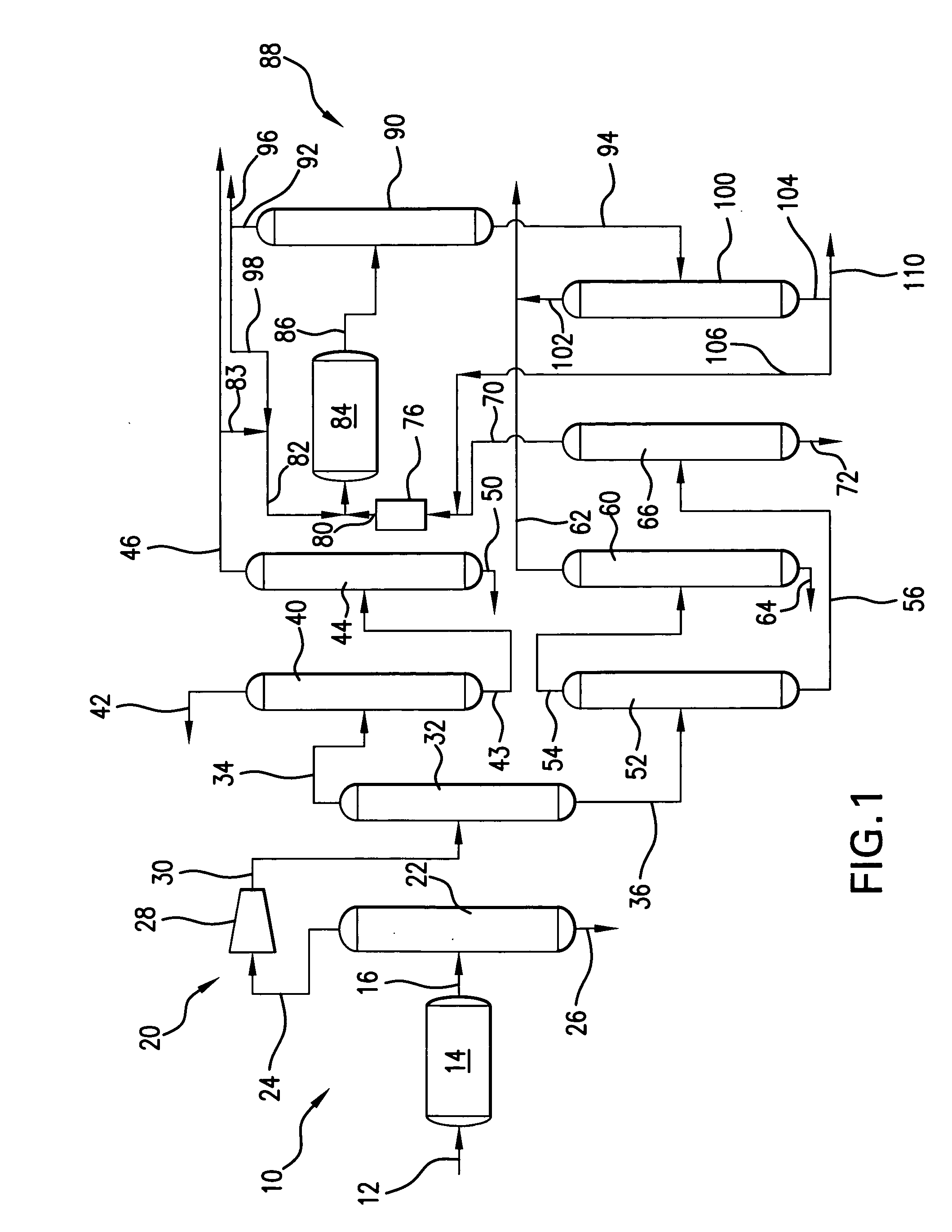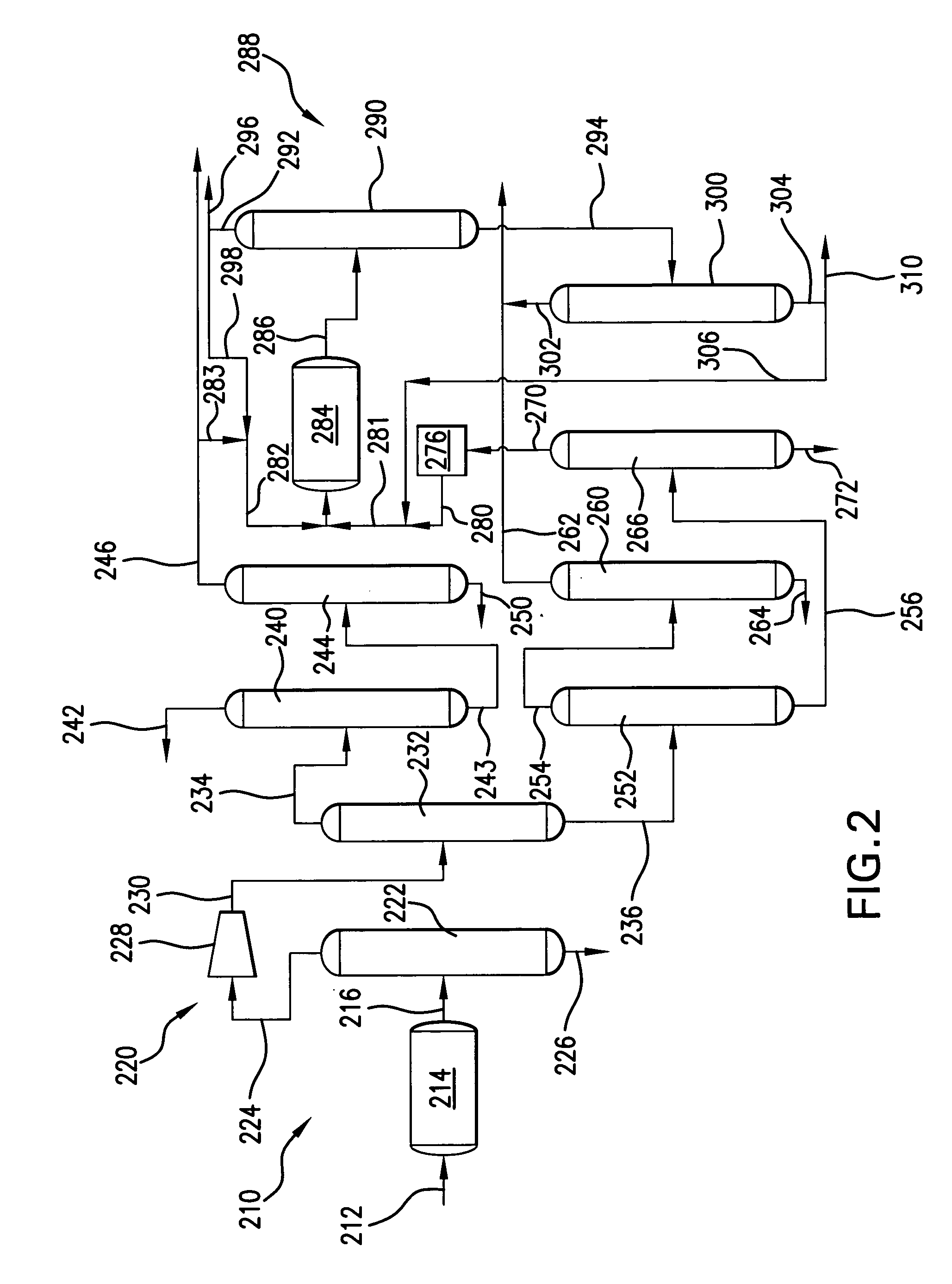Oxygenate conversion to olefins with metathesis
a technology of oxygenate and conversion to olefins, which is applied in the direction of hydrocarbon by metathesis reaction, hydrocarbon oil treatment products, organic chemistry, etc., can solve the problems of prior art generally failing to provide a processing scheme and arrangement as effective and efficient, and oxygenate-containing feedstocks, etc., to achieve the effect of improving the processing of oxygenate-containing feedstocks
- Summary
- Abstract
- Description
- Claims
- Application Information
AI Technical Summary
Benefits of technology
Problems solved by technology
Method used
Image
Examples
Embodiment Construction
[0019] Oxygenate-containing feedstock can be converted to light olefins in a catalytic reaction and heavier hydrocarbons (e.g., C4+ hydrocarbons) formed during such processing can be subsequently treated such that at least a portion of the quantity of 1-butenes formed upon such conversion are subsequently isomerized to form a stream containing 2-butenes. Such 2-butenes can then be metathesized with ethylene to produce additional propylene
[0020] As will be appreciated, such processing may be embodied in a variety of processing arrangements. As representative, FIG. 1 illustrates a simplified schematic process flow diagram for a process scheme, generally designated by the reference numeral 10, for the conversion of oxygenates to olefins and employing a metathesis zone to enhance the yield of propylene, in accordance with one preferred embodiment.
[0021] More particularly, an oxygenate-containing feedstock or feedstream 12 such as generally composed of light oxygenates such as one or m...
PUM
| Property | Measurement | Unit |
|---|---|---|
| pressure | aaaaa | aaaaa |
| pressure | aaaaa | aaaaa |
| temperature | aaaaa | aaaaa |
Abstract
Description
Claims
Application Information
 Login to View More
Login to View More - R&D
- Intellectual Property
- Life Sciences
- Materials
- Tech Scout
- Unparalleled Data Quality
- Higher Quality Content
- 60% Fewer Hallucinations
Browse by: Latest US Patents, China's latest patents, Technical Efficacy Thesaurus, Application Domain, Technology Topic, Popular Technical Reports.
© 2025 PatSnap. All rights reserved.Legal|Privacy policy|Modern Slavery Act Transparency Statement|Sitemap|About US| Contact US: help@patsnap.com



